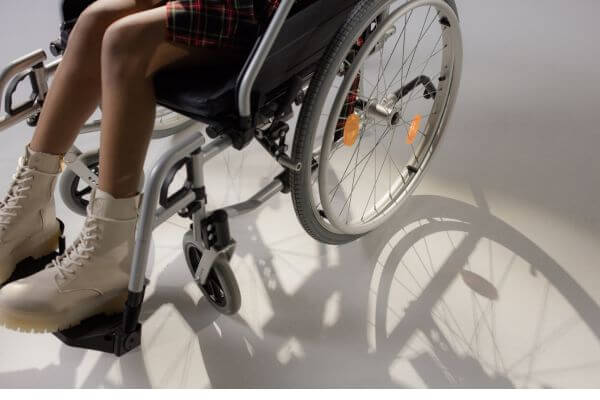For individuals with mobility challenges, wheelchairs are essential tools for maintaining independence and improving quality of life.
However, the costs associated with purchasing, maintaining, or repairing a wheelchair can be significant.
Fortunately, many insurance providers offer coverage to help alleviate this financial burden. This article explores wheelchair insurance coverage options, factors affecting eligibility, and how to maximize benefits.
Wheelchair insurance can be a lifeline for individuals who need mobility assistance. Understanding the different types of coverage, navigating the claims process, and knowing how to advocate for your needs can make a significant difference in reducing financial stress and ensuring access to quality care.
Whether you’re exploring options for the first time or need guidance on appealing a claim, this guide provides comprehensive insights into wheelchair insurance coverage.
What is Wheelchair Insurance Coverage?

Wheelchair insurance coverage refers to financial assistance provided by health insurance plans to help cover the cost of purchasing, renting, or maintaining a wheelchair. This coverage typically applies to wheelchairs deemed medically necessary for the policyholder.
Insurance plans may cover various types of wheelchairs, including:
- Manual Wheelchairs: Basic models for everyday mobility. These are often the most affordable and widely covered.
- Power Wheelchairs: Motorized models for those with limited upper-body strength. These are essential for individuals with severe mobility impairments.
- Custom or Specialty Wheelchairs: Designed for specific medical conditions or tailored to individual needs. These are more expensive and often require detailed medical justification.
Insurance coverage ensures that individuals who need mobility aids are not left bearing the full financial burden. It also promotes better health outcomes by enabling access to appropriate equipment.
Does insurance cover the cost of a sports wheelchair
To perfectly answer the question strongly depends on the type of insurance that may cover wheelchairs. Let’s look at them.
Types of Insurance That May Cover Wheelchairs
Health Insurance Plans
Most private health insurance plans include coverage for durable medical equipment (DME), including wheelchairs. Coverage details vary by plan and provider, so it’s important to review your policy.
Many plans require a physician’s prescription to demonstrate medical necessity and may impose restrictions on the type of wheelchair covered.
Medicare
Medicare Part B covers wheelchairs classified as DME if they are deemed medically necessary. To qualify:
- A physician must provide a written order stating the medical need for the wheelchair.
- The wheelchair must be used primarily for home mobility.
- The supplier must be Medicare-approved.
Medicare typically covers 80% of the cost, with the remaining 20% paid by the patient unless supplemental insurance is available. Power wheelchairs require additional approval and documentation due to their higher cost.
Medicaid
Medicaid offers wheelchair coverage in most states, often with more flexible eligibility criteria than Medicare. Coverage includes manual and power wheelchairs, with requirements varying by state.
Medicaid recipients should check state-specific policies, as some states provide enhanced benefits, including custom wheelchairs and accessories.
Private Insurance
Private insurers often cover wheelchairs under their DME policies. Coverage levels, co-pays, and deductibles depend on the specific plan.
Private insurance may also cover advanced options, such as custom wheelchairs, provided they are justified by medical necessity.
Workers’ Compensation
If a wheelchair is needed due to a work-related injury, workers’ compensation may cover the cost. Approval usually requires medical documentation linking the injury to the need for a wheelchair.
Workers’ compensation may also cover repairs and maintenance for wheelchairs used as part of an injury settlement.
What Factors Determine Wheelchair Insurance Coverage?

Medical Necessity
Insurance providers typically require proof that a wheelchair is medically necessary. This is determined by a physician’s evaluation and prescription, stating that the wheelchair is essential for mobility and daily living.
The prescription must detail why a wheelchair is needed and, in some cases, why a specific type is recommended.
Type of Wheelchair
Basic manual wheelchairs are more likely to be covered than high-end power wheelchairs or custom models. Insurance providers may also assess whether a less expensive option could meet the patient’s needs.
For example, they may prioritize a manual wheelchair over a power model unless significant medical justification is provided.
Insurance Provider Policies
Coverage varies widely among insurance providers. Some policies require pre-authorization, while others may impose annual caps or limit coverage to specific brands or models.
Reviewing the insurance policy’s fine print is essential to avoid unexpected out-of-pocket costs.
Cost and Budget Considerations
Many insurance plans have caps on DME reimbursement. Patients may need to pay out of pocket for costs exceeding these limits or for non-covered features.
For example, customizations like upgraded seating or advanced technology may not be included in standard coverage.
How to Get Insurance Coverage for a Wheelchair
Step-by-Step Process
- Consult a Physician: Obtain a prescription and documentation of medical necessity. The physician’s evaluation is a critical component of the claims process.
- Choose a Supplier: Work with a medical equipment provider that accepts your insurance. Ensure the supplier is in-network to minimize out-of-pocket costs.
- Submit a Claim: Provide required documents, including the physician’s prescription and supplier invoice. Be thorough in your submission to avoid delays.
- Follow Up: Communicate with your insurance provider to ensure the claim is processed. Regular follow-ups can help address issues promptly.
Documentation Requirements
- Physician’s prescription.
- Medical necessity evaluation.
- Detailed quote or invoice from a DME supplier.
- Any required prior authorization forms.
Proper documentation is essential for approval. Missing or incomplete paperwork is a common reason for claim denials.
What Does Wheelchair Insurance Cover?

Covered Costs
- Purchase Costs: Full or partial payment for the wheelchair.
- Rental Fees: Temporary coverage for short-term needs, such as post-surgery recovery.
- Repairs and Maintenance: Includes battery replacement for power wheelchairs or fixing structural damage.
- Accessories: Items like cushions, armrests, and footrests that enhance comfort and usability.
Non-Covered Costs
- Cosmetic Upgrades: Luxury finishes or non-essential features.
- Non-Medical Customizations: Features not directly tied to medical necessity.
- High-End Models: Wheelchairs exceeding the insurance provider’s budgetary limits may not be fully cov
How to Appeal a Denied Claim
Reasons for Denial
- Missing medical documentation.
- Lack of pre-authorization.
- Disagreement over medical necessity.
- Exceeding annual coverage limits.
Steps to Appeal
- Review the Denial Letter: Understand the specific reason for denial.
- Gather Additional Evidence: Collect updated medical records or letters from your physician.
- Resubmit the Claim: Include all required documentation and address the reason for denial.
- Seek Assistance: Consider working with a patient advocate or legal professional if the appeal is unsuccessful.
Appealing a denied claim can be a lengthy process, but persistence and detailed documentation often yield positive results.
Tips for Maximizing Wheelchair Insurance Benefits
- Work with In-Network Suppliers: Using providers within your insurance network reduces costs.
- Ensure Proper Documentation: Accurate and detailed paperwork increases the likelihood of claim approval.
- Understand Your Policy: Familiarize yourself with coverage limits, co-pays, and requirements.
- Communicate Regularly: Stay in touch with your insurance provider and supplier throughout the process.
- Explore Additional Resources: Non-profit organizations or grants may help cover uncovered costs.
FAQs To Wheelchair Insurance Coverage
Does Medicare Cover Power Wheelchairs?
Yes, Medicare Part B covers power wheelchairs if they are medically necessary and used primarily for home mobility. Pre-authorization and a physician’s prescription are required.
Can I Get Wheelchair Coverage Through Medicaid?
Yes, Medicaid typically covers wheelchairs for eligible individuals. Coverage varies by state and often includes both manual and power wheelchairs. Recipients should check their state’s specific policies.
Are Wheelchair Repairs Covered by Insurance?
Most insurance plans, including Medicare and Medicaid, cover repairs for wheelchairs they originally financed. However, limits may apply, and pre-authorization may be required for extensive repairs.
Conclusion
Wheelchair insurance coverage is a vital resource for individuals who rely on wheelchairs for mobility and independence.
Understanding the types of coverage available, the factors influencing eligibility, and the process for securing coverage can help you navigate the system effectively.
By working closely with healthcare providers and insurance representatives, you can ensure that your needs are met while minimizing out-of-pocket expenses.
Take the time to review your options and advocate for the support you deserve to maintain your mobility and quality of life.










